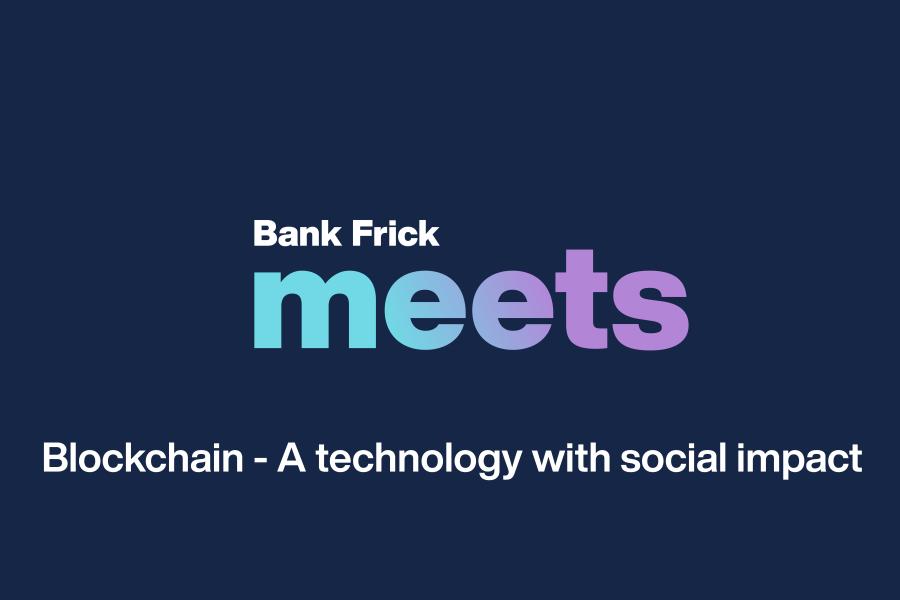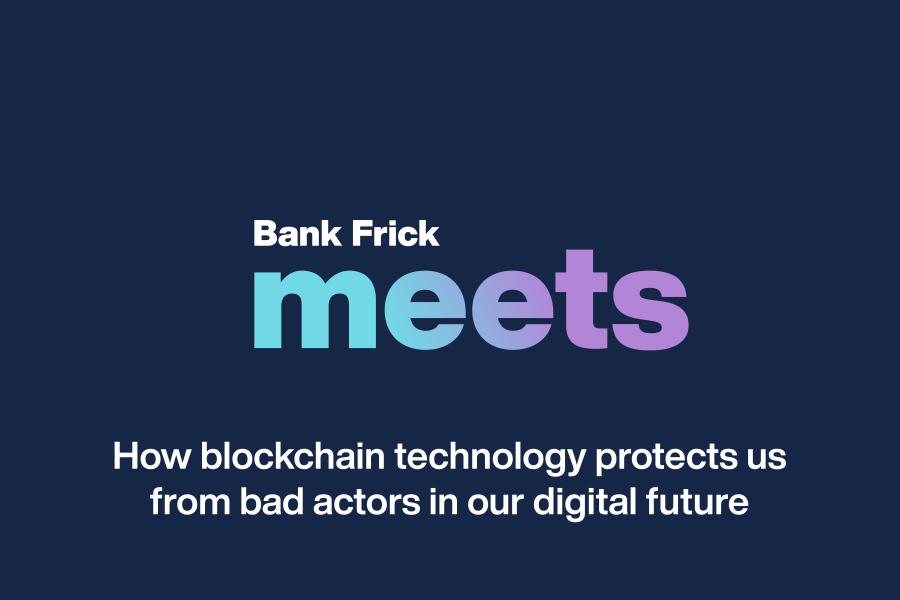Ensuring the future of insurance with blockchain technology
The insurance market is an essential part of the global economy, covering both personal and business risks. Thus, it is no wonder that it is one of the largest industries in the world, boasting an estimated value of about USD 5 trillion and employing about 2.7 million people across the globe. Out of USD 5 trillion, around USD 3.7 trillion makes up the value of the global life insurance market, while the value of the property and casualty insurance market carries a value of USD 1.3 trillion.
Global insurance market is growing strongly
About 40% of the global insurance market is in the Asia-Pacific region, making it the largest insurance market in the world. The United States comes in second, followed by Europe, at 25% and 20%, respectively.
In the next five years, the global insurance market is projected to grow at a compound annual growth rate (CAGR) of about 3.5%, thanks to urbanisation, an increasing global population, economic growth, digitalisation and technology. The insurance industry is particularly ripe for digital disruption because it has mainly been slow in responding to technological development over the years. That means there is room for technologies like blockchain to come in and improve the current pain points in this industry, as shown further down.
Some insurance companies are already leveraging blockchain technology and artificial intelligence (AI) in insurance coverage and claims processing, while others are creating decentralised insurance protocols. These companies and many others seek to bring transparency, efficiency and security to insurance through the use of blockchains.
Insurance: an industry ripe for disruption
Today’s insurance industry is facing numerous challenges, one of the biggest being inefficiency. Despite technological advancements, business models in the traditional insurance industry have remained resilient to technological change, still relying on paper-based business processes in many parts throughout the sector. This makes the industry slow and inefficient, with claims and underwriting still being processed on paper, leading to delays and errors.
The inefficiency of the industry has also resulted in high costs for both policyholders and insurers. Intermediaries, such as brokers and agents, add to the cost of insurance for consumers, and fraud in the form of exaggerated or false claims can also lead to honest policyholders paying more than they should.
Another challenge in the insurance sector is fragmented data sources. Insurance companies generate and acquire large amounts of data, but it is often fragmented, making it unreliable in providing useful insights. For example, an insurance company may store third-party data in different databases, making it difficult to draw useful data insights. There is also a lack of transparency, with insurance firms failing to provide clear information about benefits, claims and payments, resulting in unpaid claims and creating mistrust between insurance companies and policyholders.
In the end, this can lead to frustrated and unsatisfied customers. To combat the stagnating customer happiness experience, the traditional insurance industry is increasingly facing intense competition from new market entrants, such as insurtech start-ups, putting pressure on the industry to adopt technology faster.
Benefits of using blockchains in insurance
A number of benefits can be gained by insurance firms by adopting blockchain technology:
- Increased efficiency: Integrating blockchains can speed up many of the processes that are typically handled manually in the traditional insurance industry. For example, it can automate claims processing, policy administration and underwriting while removing the need for insurance brokers and agents.
- Better transparency and security: Blockchain technology can allow both insurers and policyholders to view all the details regarding a given policy and track the status of claims and payments. This increased transparency can improve trust and reduce fraud. The blockchain also makes it impossible for anyone to alter the details of any policy.
- Improved customer experience: Policyholders have more control over their insurance data when blockchain technology is used. They can monitor the entire insurance process more easily, giving them a sense of control.
- Fraud mitigation: Fraud is a common challenge in insurance and costs US consumers billions of dollars every year. Adopting blockchain technology can mitigate this problem in various ways. For example, employees of insurance companies may only be required to enter verified information on the blockchain, thereby preventing them from entering false details.
- Lower costs: Integrating existing systems with blockchain technology can increase efficiency, minimise fraud and eliminate intermediaries, resulting in reduced costs for insurance companies.
- Automation through smart contracts: Smart contracts are pieces of code that live on blockchains and automatically execute commands when specified conditions are met. They can capture the terms and obligations between the insurance firm and the policyholder when issuing policies. They can also be used to automate the processing of claims.
- Data sharing: By using a blockchain, insurance firms can share information seamlessly and in real time with other insurers, third-party data providers, regulators and other stakeholders. This can in turn enhance underwriting and the process of handling claims. Also, the blockchain acts as a single secure database where trusted stakeholders can share information and collaborate.
- New products: Thanks to the integration of blockchain-based features, insurance companies can introduce new products, such as blockchain-based parametric insurance and peer-to-peer (P2P) insurance. Parametric insurance is a type of insurance where the payout is triggered by the occurrence of a specific event based on a pre-agreed set of parameters. So, instead of compensating policyholders for their financial losses, it pays out a predetermined amount based on the parameters defined in the policy, such as the magnitude of an earthquake or the intensity of a flood. On the other hand, P2P insurance is a kind of insurance where a group of people come together to insure each other against loss.
The emergence of previously unseen use cases
Blockchain technology is already being implemented in the insurance industry. For example, it is being used in direct risk transfer and crop insurance to automate claims processing. By verifying claims, conducting damage assessments against blockchain-stored data and making blockchain-based payments, the process of handling claims becomes much smoother.
As such, blockchain technology also helps tackle fraud detection in insurance. Its immutability creates a transparent record of digital insurance data, which can be matched to verified identities to reject false or inaccurate claims. This significantly reduces the risk of fraudulent activity in the industry.
In the realm of parametric insurance, blockchain technology can improve accuracy and mitigate some problems faced in this area. Real-time data from various sources can be drawn into the blockchain, allowing for more precise payouts to policyholders when a damaging event occurs. Lack of data is a common challenge in parametric insurance, but with blockchains, this is no longer an issue.
The following concrete example makes the improvements more tangible and clearer. Imagine a parametric insurance policy for a farmer that covers crop damage from a natural disaster. Traditionally, the farmer would have to submit a claim to the insurance company and wait for a claims adjuster to assess the damage and determine the payout amount. With blockchain technology, the process can be automated. The smart contract on the blockchain can access real-time weather data (through a trusted network of oracles) from various sources to determine if a natural disaster has occurred and if the policyholder is eligible for a payout. The payment can then be automatically triggered, without the need for manual intervention, speeding up the claims process and reducing the risk of fraud or human error.
The same also goes for the upcoming new world of the Internet of Things (IoT) and telematics. By collecting and storing data from devices such as sensors and telematics, insurance companies can make the process of claims handling and underwriting much more efficient. Furthermore, a blockchain-based shared database holding customer data can streamline the know-your-customer/anti-money-laundering (KYC/AML) compliance process for insurance companies.
Consider, for example, a shipping company that has an insurance policy that covers the theft of the goods being transported. The policy also includes telematics devices on the ships to track their location and monitor the temperature and humidity of the goods being transported. With the collected data from these devices, the insurance company can easily determine if theft has occurred and process the claim.
Last but not least, it is not only insurance but reinsurance processes that can be more easily automated with blockchain technology. Calculation of premiums, claim settlements and sharing of risk can all be streamlined, making the process much more efficient. Additionally, blockchains can be used to track insured goods and assets as they move along the supply chain, collecting data such as location, temperature and humidity. This data can be used by insurance companies to make payments in the event of a loss.
Addressing scalability, awareness and regulations
Although blockchain technology can have a huge impact on the insurance industry, it still has to surpass certain problems and limitations for it to fully transform this sector. Although most insurance companies may be aware of blockchain technology and its potential, the blockchain industry still lacks the maturity to help insurance companies determine which type of blockchain best caters to the privacy and security of their customers’ data.
Another issue is the scalability of the technology, which currently can struggle to handle large amounts of data. In the context of insurance companies that handle the data of millions of customers, scalable ways of using a blockchain are indispensable. From a company’s perspective, the biggest challenge in this regard is working out possibilities to interact with public blockchain networks, because only then can they profit from a blockchain’s key features, like openness, interoperability and composability. Just switching to a private version that is not connected to any underlying public blockchain infrastructure usually means forfeiting any of the advantages.
An obvious big challenge is the regulatory environment surrounding blockchain technology. This is still in development and uncertain, making direct interaction with blockchain technology a potential compliance challenge for insurance companies. Furthermore, because there is no standardisation in the blockchain industry, it can be difficult and costly to integrate blockchains with existing legacy systems.
Shaping the future of a blockchain-based insurance industry
Blockchain is an exciting technology for the insurance industry because it provides merits like increased efficiency and reduced costs. It is, therefore, expected that more and more insurance companies will leverage blockchain technology in the future. This could increase its implementation within this industry, as well as lead to the emergence of new products that insurers and policyholders will benefit from.
That said, the insurance industry should be aware that blockchain technology comes with certain limitations and risks, like scalability and regulatory issues, as it is still in the early stages of development. However, these obstacles should not necessarily discourage the insurance industry from exploring the possibilities of blockchain technology, because they might not last forever. And by exploring and implementing blockchain-based solutions now, the industry has the opportunity to shape the market and regulations around it.
Share post
Related Articles

How Blockchain Enables Transparency and Efficiency
Blockchain technology, first demonstrated in 2010 through a historic Bitcoin transaction, has evolved far beyond cryptocurrencies, offering solutions for transparency, efficiency, and decentralization across industries. Its core principles—decentralization, transparency, and immutability—enable secure, peer-to-peer transactions without intermediaries. Innovations like Ethereum's smart contracts have expanded blockchain's capabilities, impacting supply chains, automation, and governance.
Despite concerns about energy use, modern blockchains are increasingly energy-efficient, and misconceptions about complexity or security often stem from misunderstandings. For nonprofits, blockchain offers transformative potential: donations can be transferred quickly, cost-effectively, and transparently, ensuring more funds reach beneficiaries while improving accountability and impact measurement.
As blockchain reshapes societal structures and trust, it presents nonprofits with powerful tools to amplify their impact. Organizations willing to embrace this innovation will be well-positioned to drive meaningful change in an interconnected digital world.

Insights into the process of designing AMCs
Since their introduction, Actively Managed Certificates (AMCs) have become a significant component of the European financial market. As a structured product, legally classified as debt securities, they hold a counterparty risk for the investor that is comparable with other structured financial products. AMCs are securitised, which gives the holder the right to cash repayment or the delivery of an underlying asset. As the buyer, the investor becomes a creditor of the issuer and thus dependent in terms of the type and amount of repayment, which is subject to different parameters.

Direct market access – efficient trade execution for fund strategies
Liechtenstein has a long-standing tradition in the fields of banking and asset management. Since joining the EEA in 1995, Liechtenstein’s financial centre has established itself as a professional point of reference for promoters of collective investment vehicles on the European financial market.

Tokenisation: A new way of representing assets
Ever since the dawn of time, human beings have hunted and gathered, collecting the things they discovered and making them their own. This was when the concept of ownable assets first emerged, albeit in rudimentary form. Since then, assets have evolved and become more complex as humans have found more reliable ways to connect assets to people. Today, people enter into legal contracts when transferring assets.

Blockchain: A technology with social impact
Foundational technology is the most effective tool for impacting society at large and solving the challenges it is faced with. One such foundational institutional technology is the blockchain, which entered the picture through the discovery of Bitcoin in 2009 and has since proliferated and emerged in many different forms.
What does blockchain’s social impact look like?

How blockchain technology protects us from bad actors in our digital future
The blockchain industry has experienced significant growth in the last couple of years as one unicorn after another sprouts from the soil that grows crypto start-ups. In this new series of blog posts and webinars, we take a closer look at the technology and explore why it is so successful and why everybody is talking about it. We also look beyond the speculative aspect that blockchain is so frequently associated with and focus on the real-world problems that the technology is poised to solve.

Wie klassische Finanzintermediäre in der Krypto- und Blockchain-Welt Fuss fassen können
Mit zunehmender Selbstverständlichkeit fragen immer mehr Kunden nach Dienstleistungen rund um Kryptowährungen. Für Finanzintermediäre eröffnet diese Nachfrage neue Geschäftsmöglichkeiten. Um das Potenzial heben zu können, müssen die Akteure aber auch das Spezialwissen zur Verfügung haben.

Blockchain technology reinvents correspondent banking – just not yet
As one of its major use cases, blockchain technology is said to transform traditional correspondent banking. So far major challenges have pushed back this transformation. It is more likely than ever that with central bank digital currencies on the horizon; blockchain disruption will finally come to fruition in the realm of cross-border banking.

Turning crypto investment into an earning asset
With Ethereum upgrading to Proof of Stake, the crypto world is going through one of its most transformative shifts to date. This means that customers will soon be able to earn interest on their digital asset holdings through a process called staking. What staking is, how it will define the future of Ethereum and digital asset custody at large is explained in this article.

A comprehensive overview of Liechtenstein’s banking regulation
In this in-depth article, the authors show the economic and regulatory environment in which banks in Liechtenstein operate. This article first appeared in the reference work The Banking Regulation Review (Twelfth Edition) published by Law Business Resarch.